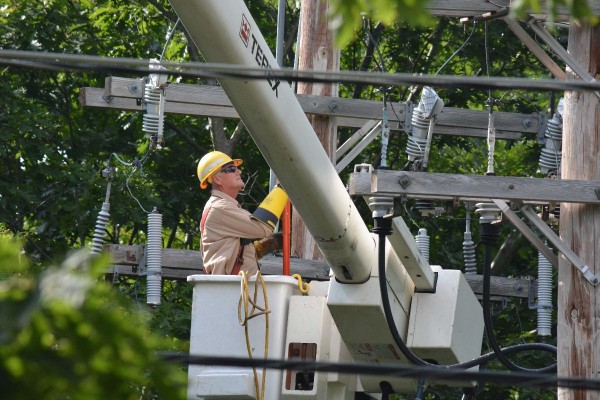
For most North American electric utilities, vegetation management (VM) is a critical part of system maintenance. Utilities strive to maintain normal conditions and ensure the system can withstand normal weather events. Even on a fair day, a broken limb or downed tree can cause an outage.
By implementing a successful VM program, utilities can help ensure reliability and mitigate risk. One successful approach to vegetation man agement incorporates four key components that occur simultaneously: cycle pruning, hazard tree mitigation, a midcycle review, and a forestry reliability assessment. This four component program is appropriate for most electric utilities and can be implemented with either internal or external vegetation management resources.
CYCLE PRUNING
For any utility creating or improving a VM program, cycle pruning should be the primary focus. Cycle pruning is, essentially, preventative maintenance, and technicians and arborists should utilize best management practices and techniques as described in the American National Standards Institute (ANSI) A300: “Standards for Tree Care Maintenance Operations” and its Best Management Practices companion publications.
Cycle pruning refers to the period of time in which a utility’s vegetation management team will prune the lines within its territory. For utilities designing a new program, the first step is to determine a cycle length. To do so, a company must balance multiple factors, including clearance created at time of pruning, growth rates of predominant species, climate, risk to system performance, aesthetics, public acceptance of pruning, and cost to implement.
HAZARD TREE MITIGATION
A hazard tree mitigation program yields the largest annual reliability benefit, as tree and limb failure— through uprooting, falling, breaking, among others— represents a large portion of treerelated interruptions on most electrical systems. By using data analysis tools and a field review, the vegetation management team can identify circuits that have major tree reliability issues related to tree and large limb failure. An entire circuit can then be targeted for systematic risk tree assessment. Depending on desired work management and contracting strategy, targeted circuits may—or may not—correspond to circuits undergoing pruning. A utility can effectively prioritize this hazard tree work by looking at critical portions of targeted circuits. In the Northeast, some utilities have greatly improved treerelated reliability by removing hazard trees along critical portions of a circuit.
MID-CYCLE REVIEW
A midcycle review is the third component of a comprehensive VM program. Midcycle reviews are conducted between the last circuit pruning and the next forecasted circuit pruning, to review and assess dangers to the electric system.
If a utility is operating on a fiveyear pruning cycle, for example, a mid cycle review should be scheduled for year three or four. This allows the team to identify and address any potential vegetation and electrical contact problems that may arise before the next scheduled pruning. A midcycle review proactively addresses the fastest growing tree species that will grow into the conductors—and potentially cause reliability, restoration, and safety issues—prior to the next cyclic pruning. It may also reduce line inspection time, as inspectors are more readily able to see equipment and its condition.
FORESTRY RELIABILITY ASSESSMENT
The final component to a comprehensive VM program is a forestry reliability assessment, which involves identifying system reliability concerns that could be addressed via vegetation management work. This piece is often overlooked, but it’s important because it targets portions of circuits for inspection, pruning, and hazardtree removal based on recent historic reliability performance or pressing customer issues.
The goal of this component is to give utilities the flexibility to react to resolve immediate reliability issues not otherwise addressed by the scheduled maintenance programs. The other components in this VM program have schedules that are fixed for an entire year’s worth of work; however, the forestry reliability assessment component allows a VM team to address issues flexibly. The team may handle operations concerns, engineering reliability concerns, or customer concerns in an efficient and effective manner without compromising the integrity of the aforementioned planned components.